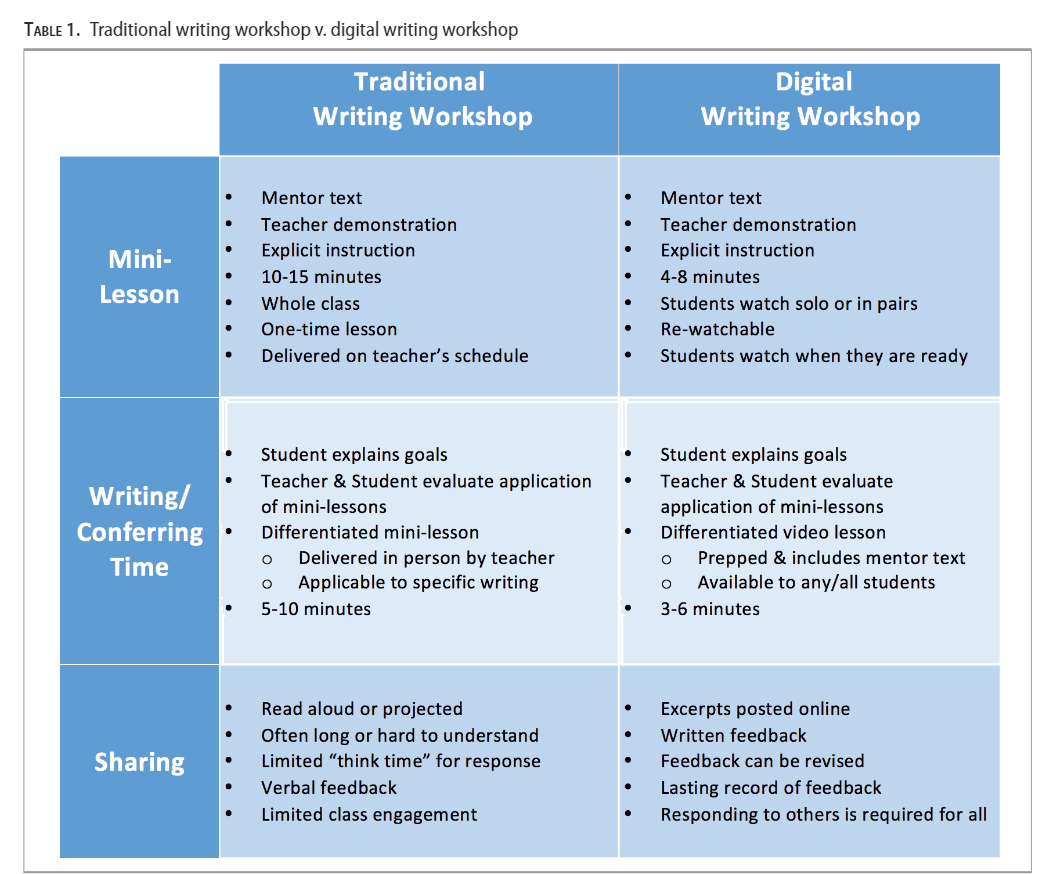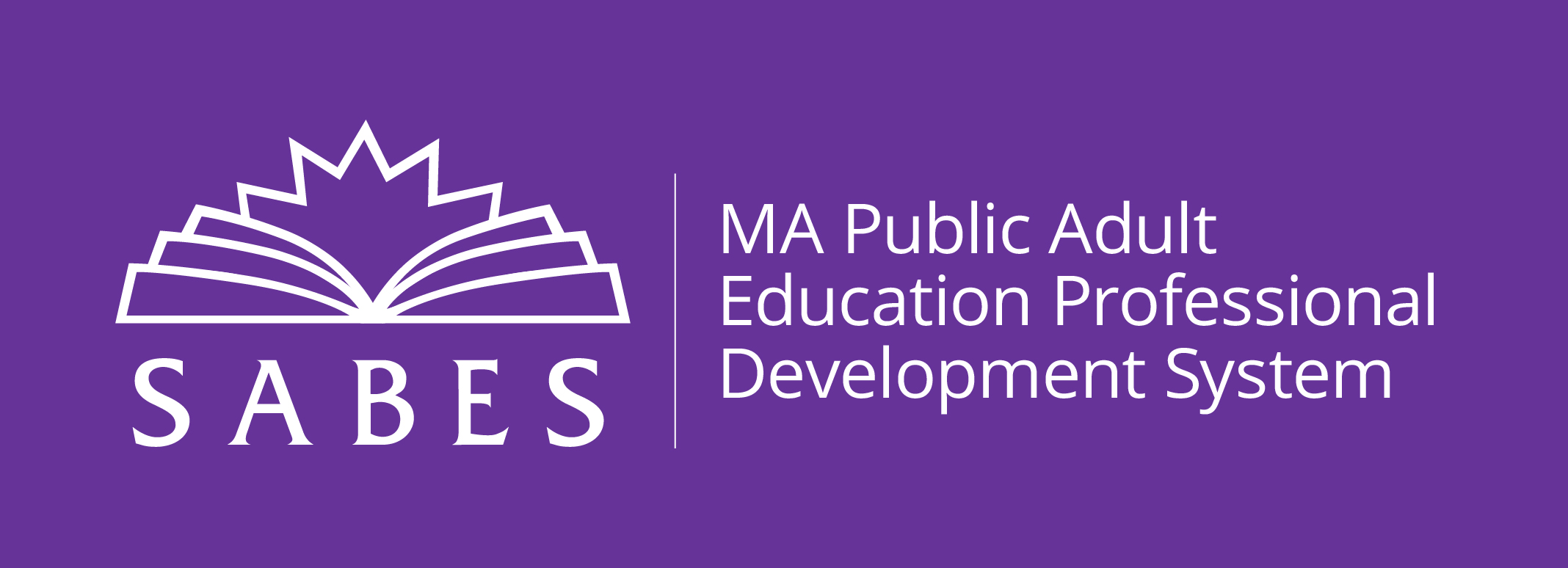This chart and the following quotes are excerpted from "Discovering Digital Differentiation: A Teacher Reimagines Writing Workshop in the Digital Age" by Secoy and Sigler, published by the National Council of Teachers of English in 2019. The full article describes how a middle school teacher (Secoy) in a rural Virginia successfully transitioned to a blended, mostly online Writing Workshop format. While written prior to this pandemic, it has obvious applicability now as we teach from home.
Compare the traditional and digital formats in this chart. What do you notice?

Among other things, perhaps you noticed that mentor texts, teacher modeling, and explicit instruction are still there in the digital workshop, but the amounts of time for mini-lessons or writing and conferring are shorter, and students can watch and re-watch the videos at any time, as much as they like.
This sounds like an advantage. You probably know from experience that "asking students to sit through a mini-lesson focused on skills they already have or providing instruction too far beyond their current writing skills is ineffective," borne up by Vygotsky's finding that "students learn the most when working within their zone of proximal development (Vygotsky, 1978)."
Research also supports that students "learn best when they receive direct, explicit instruction about writing (De La Paz & Graham, 2002)." And Lucy Calkins outlined, in 1994, the still accepted format for a writing lesson:
- Begin with a published mentor text (the CCRSAE recommends using texts that matter, of publishable quality)
- Model thinking and revision with your own writing
- End with suggestions for specific opportunities where students can apply the lesson to their own writing.
This teacher used Screencast-O-Matic (free at the basic level) which records both her face (via webcam) and her computer screen "to prepare a range of mini-lessons to meet the diverse needs of learners in her classroom." She used Google Drive to host a library of the mini-lessons she created, all accessible to her students. See a sample mini-lesson at https://wlu.box.com/v/sampledigitalminilesson.
"Using this differentiated, digital mini-lesson format, Secoy’s students still receive direct, explicit instruction from their teacher. Now, however, that instruction is specifically differentiated to align with the students’ immediate needs as writers."
Related Resources:


